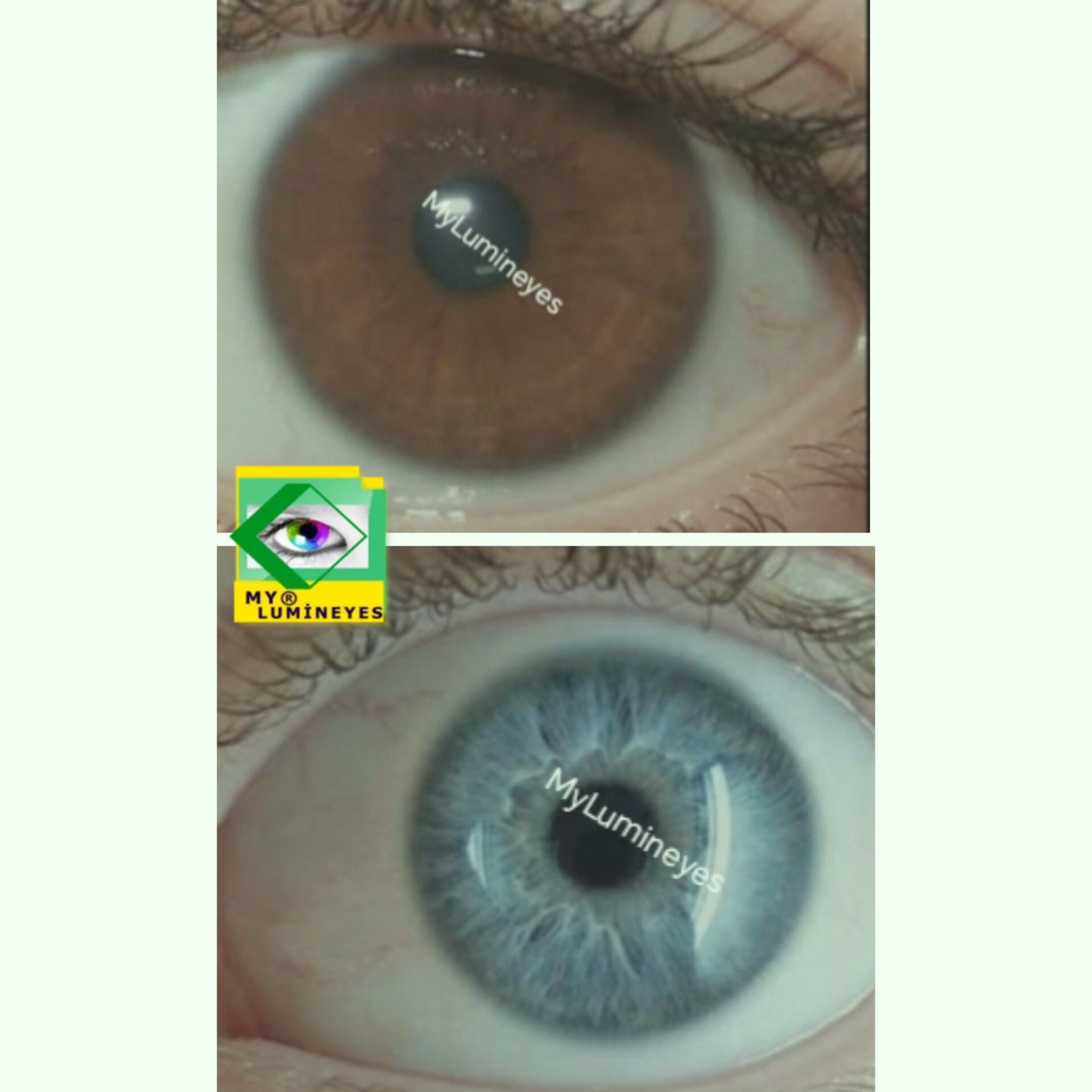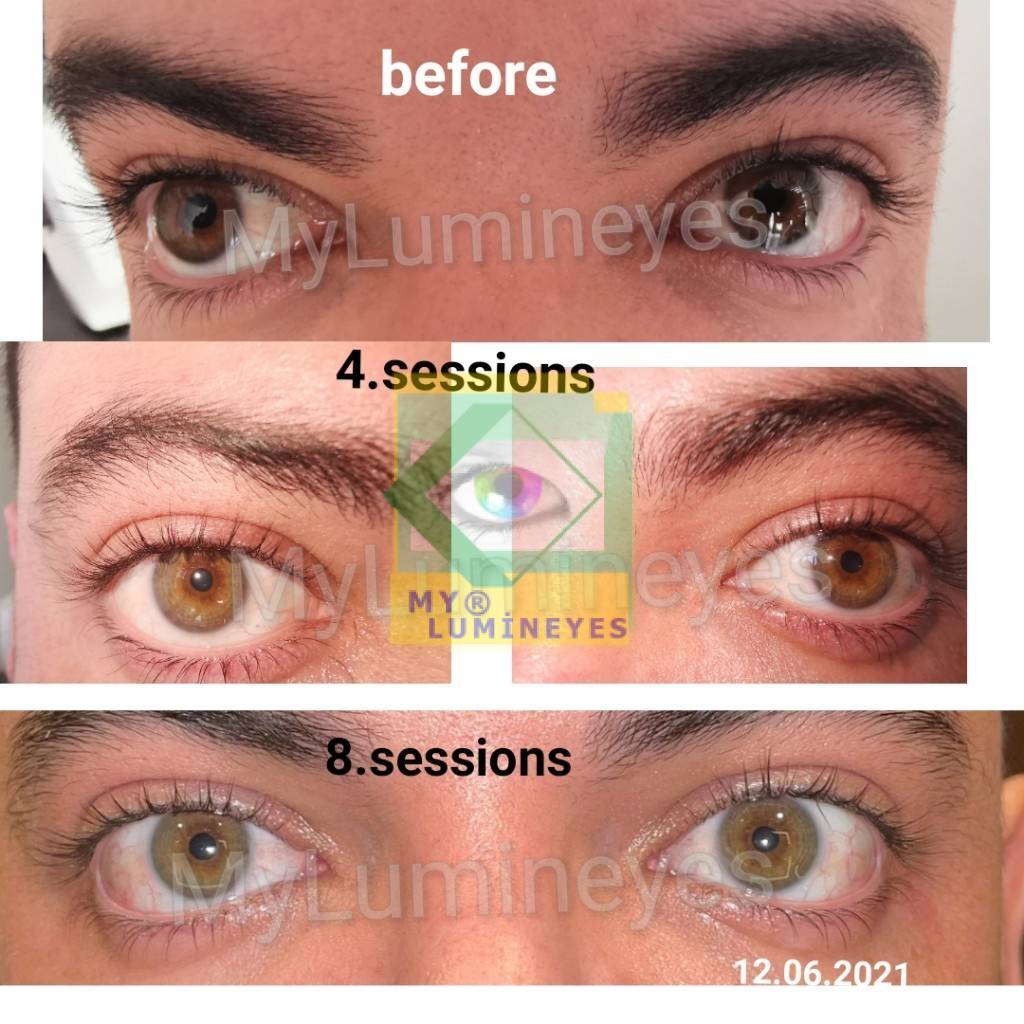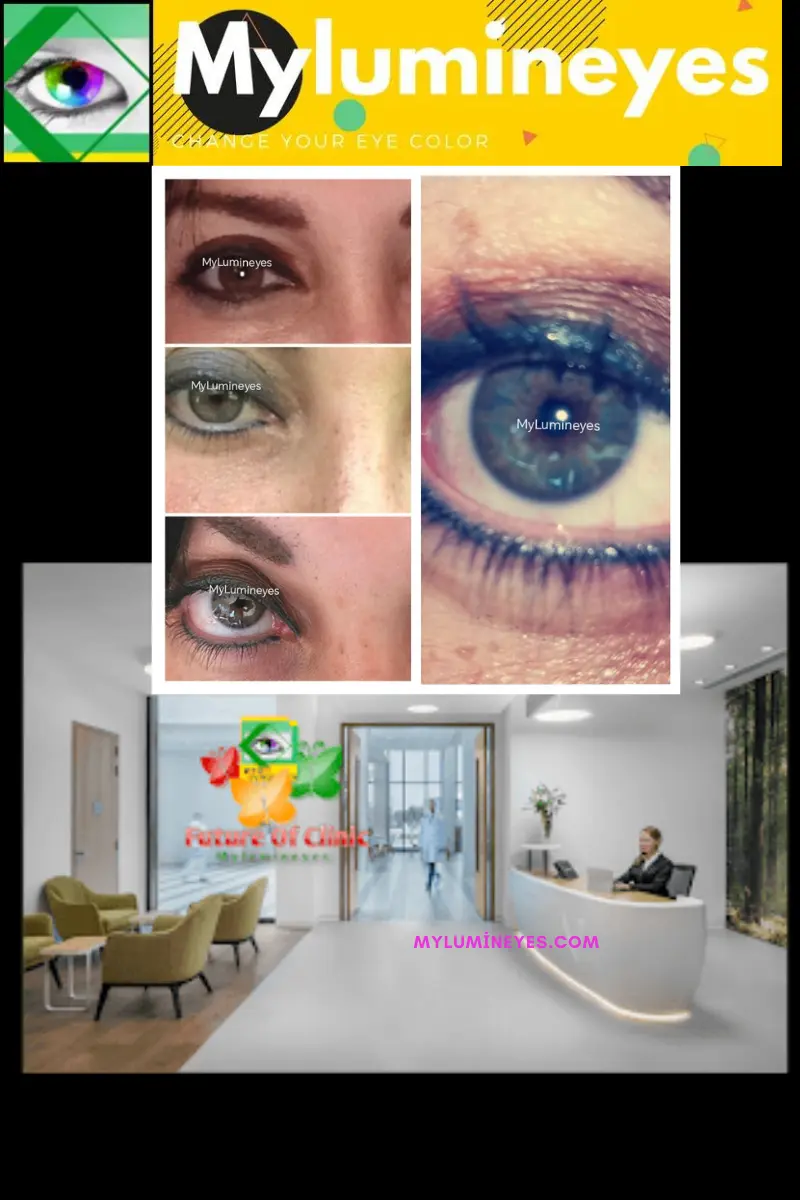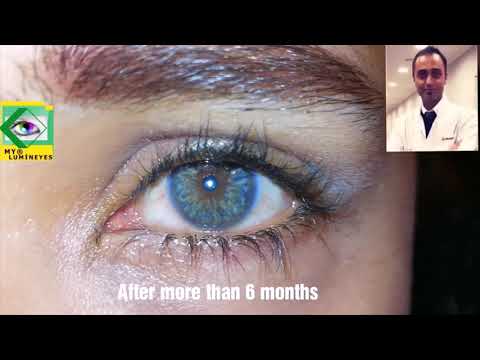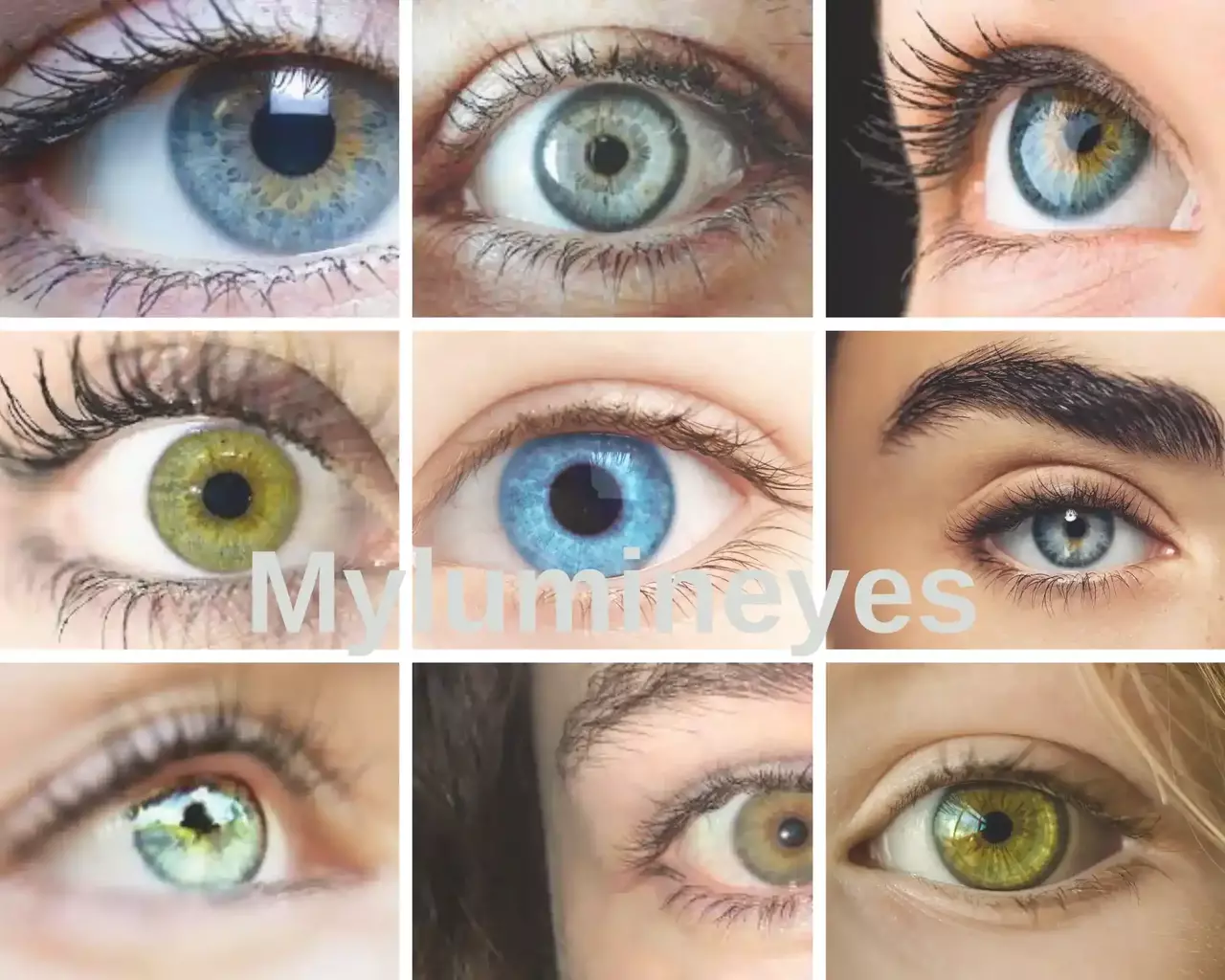Why Does Eye Color Change? (Complete Medical Guide + Laser Explanation)
Eye color is one of the most unique and recognizable features of the human body — yet it is far more dynamic than most people realize. Many individuals notice their eye color looking lighter, darker, or slightly different in photographs, different lighting conditions, or even during emotional states. Others observe real, long-term changes over years. As an ophthalmologist who has studied iris physiology and laser-based depigmentation for more than a decade, I will explain the true scientific reasons behind eye color change and how permanent laser eye color transformation works.
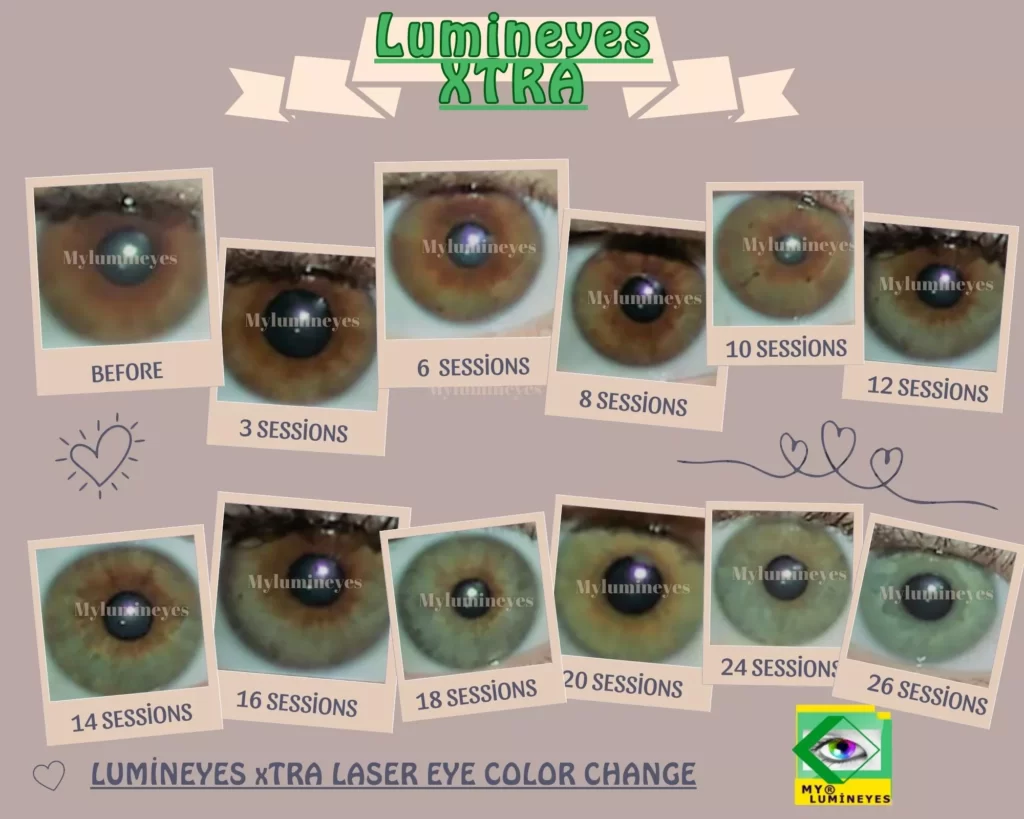
What Determines Eye Color?
Eye color is primarily determined by:
- Melanin — the brown pigment stored in the iris
- Iris stromal structure — collagen fibers that scatter light
- Genetics — inherited traits from both parents
- Rayleigh scattering — the same light-scattering effect that makes the sky appear blue
Contrary to popular belief, there is no blue, green, or gray pigment in the human eye. All lighter eye colors come from low melanin density plus light scattering through the iris stroma.
Short-Term (Daily) Eye Color Changes
Many people notice their eye color shifting day to day or even hour to hour. These temporary changes usually occur because of:
- Lighting — indoor vs. outdoor, warm vs. cool light
- Pupil size — a dilated pupil exposes less iris, making eyes look darker
- Clothing colors — surrounding color contrast affects perception
- Camera settings — exposure, white balance, image sharpness
- Emotions or stress — adrenaline can temporarily change pupil size
- Angle of view — certain angles reflect more light from the iris
These changes are optical and temporary — not structural.
Eye Color Changes With Age
Eye color often changes naturally in childhood and sometimes again in adulthood:
- Babies with lighter eyes may darken as melanin production increases.
- Adults may notice slight lightening or darkening due to hormonal changes or melanin redistribution.
- Aging can cause subtle color shifts as collagen fibers in the iris change and pigment granules become less dense.
These changes are slow and subtle — not dramatic.
Medical Conditions That May Change Eye Color
Certain eye diseases can cause real, noticeable color change. Examples include:
- Uveitis — inflammation altering the iris texture
- Fuchs heterochromic iridocyclitis
- Horner syndrome
- Pigment dispersion syndrome
- Trauma-induced iris atrophy
If one eye suddenly changes color, a medical examination is important. Healthy eyes normally change gradually, not overnight.
Can You Change Eye Color Permanently?
Yes — but not naturally. Permanent eye color change requires medical intervention. Today there are three main methods:
- Artificial iris implants — high risk
- Keratopigmentation (corneal tattooing) — unnatural results
- Laser iris depigmentation (MyLumineyes®) — non-surgical, physiologic
The key is understanding how each method works and which is medically safe.
You can read more about surgical risks here:
Keratopigmentation Eye Color Change – Risks
Why Artificial Iris Implants Are Not Recommended
Artificial iris implants are placed inside the anterior chamber. They are associated with:
- Severe corneal endothelial cell loss
- Glaucoma and dangerously high eye pressure
- Chronic inflammation
- Permanent vision damage
- Emergency removal surgeries
These risks are so significant that multiple authorities — including the American Academy of Ophthalmology — have issued warnings. For most cosmetic patients, this option is considered unsafe.
Learn more from an independent medical source:
American Academy of Ophthalmology – Eye Health
Why Keratopigmentation Often Looks Artificial
Keratopigmentation places artificial pigment inside the cornea — not the iris. This creates a flat, lens-like appearance and may result in:
- Unnatural, monochrome color
- Pigment migration or fading
- Glare, halos, and irregular astigmatism
- Difficulty reversing the procedure
You can read a full medical explanation here:
Keratopigmentation Explained
How Laser Eye Color Change Works (MyLumineyes® Explanation)
As the doctor who developed the MyLumineyes® laser method, I can clearly state that real, permanent eye color change occurs when the melanin density in the iris decreases. The laser targets only the superficial pigmented layer with selective photothermolysis, breaking melanin granules into micro-particles. Over time, the body clears these pigments through normal physiological pathways.
As melanin gradually decreases:
- The iris stroma becomes more visible
- Light scattering increases
- The eye appears lighter and brighter
- Blue, green, gray and hazel tones become possible depending on the starting grade
This is the only method that changes eye color physiologically rather than covering the iris with pigment or inserting an implant.
Detailed guide:
How to Change Eye Color With Laser
See Your Eyes Clearly Before Any Decision
Before considering any procedure, I recommend capturing high-quality close-up photos of your eyes. Many people have never examined their iris closely. Lighting, angle, and focus reveal surprising details.
For this reason, we developed the Lumineyes App — not as a filter tool, but as a professional close-up eye photography assistant:
- Accurate close-up eye capture
- Better documentation for consultation
- Natural view of your iris texture
Download the Lumineyes App on Google Play
Related Pages
- Laser Eye Color Change – Complete Guide
- Keratopigmentation – Risks & Alternatives
- Before–After Laser Eye Color Change
Your eyes are unique, and any decision to change their color deserves a clear understanding of how natural and medical mechanisms work. If you have questions, a proper medical evaluation is always the safest path forward.
FAQ – Why Does My Eye Change Color?
Why does my eye color look different in photos or different lighting?
Eye color can appear to change with lighting, background colors, and pupil size. Bright light, flash, and dark surroundings may make the iris look lighter or darker without any true change in pigment.
Can stress, mood, or emotions really change my eye color?
Stress or mood does not change the actual pigment in the iris. They can affect pupil size and blood flow, which may slightly alter how the color is perceived, but they do not create a new eye color.
When is a change in eye color a warning sign?
A sudden or asymmetric change in eye color, especially in one eye only, or changes accompanied by pain, redness, or blurred vision, should be examined by an ophthalmologist to rule out inflammation, glaucoma, or other eye diseases.
Can the laser color procedure be a reason my eye looks different?
After a planned laser iris depigmentation protocol, the eye can gradually look lighter as melanin decreases. This is different from spontaneous or unexplained color change and should always be monitored medically.
When should I see a doctor about eye color changes?
If your eye color seems to change quickly, only in one eye, or together with symptoms such as pain, light sensitivity, red eye, or vision changes, you should book an ophthalmic examination rather than relying on photos or mirrors alone.

